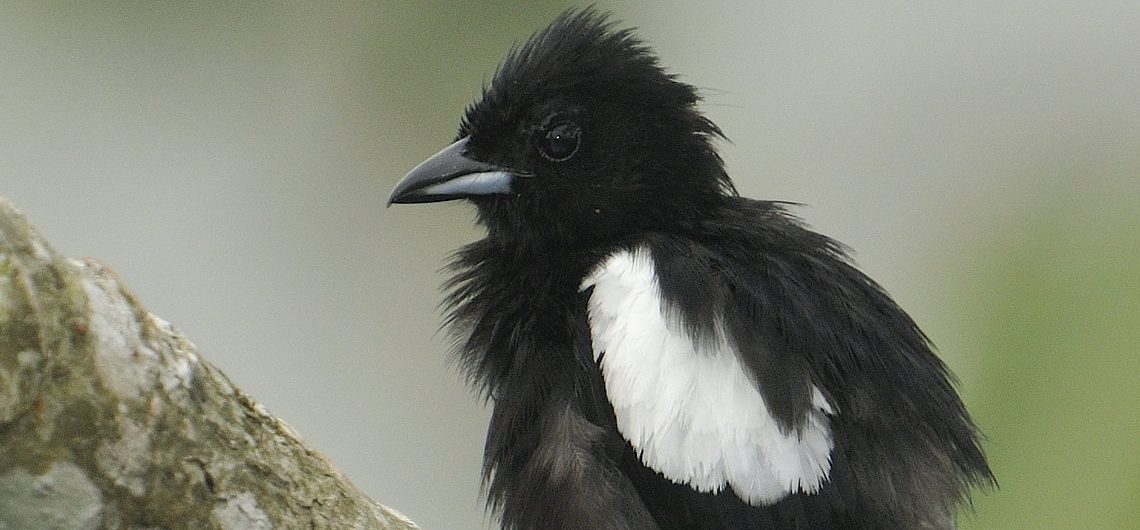White-shouldered Tanager
Tachyphonus luctosus
This handsome tanager is one that you are likely to encounter in mixed feeding flocks in the rainforests of Panama. It is one of Panama’s smaller tanager species, at 13 cm in length and weighing only up to 15 grams. The male is mostly black with a conspicuous white wing patch, giving the species its name. The female, on the other hand, looks nothing like her mate; she has an olive back, yellow underparts and a gray head. There are 5 described subspecies of the White-shouldered Tanager, and a fair bit of variation in this species in Panama: the western races have smaller wing patches. Males in Chiriqui province have a yellow crown and pale eye, and females in Chiriqui have more of an olive-colored head, showing less of a contrast with the body. The base of the mandible is a silvery-gray in all races. Immature birds are similar to females but browner, with more olive underparts. Young males start changing at the first breeding season, and will have a gradual blotchy appearance until they acquire their glossy black adult plumage.
White-shouldered Tanagers can be found in forest and woodlands, forest edge and prefer secondary growth and dense vegetation. They forage in all levels of the forest, but are most often found in the mid-story and sub-canopy. They forage in pairs and family groups. They eat primarily insects but also small fruits on occasion. They are active foragers, gleaning insects and occasionally small fruits from thin branches and tops of leaves. They give squeaky “chew” and “chut” notes, as well as a thin “tsit.” Songs vary geographically in Panama, they are generally melodic and repetitive.
Males defend their territories and engage in courtship display by flaring their white shoulder patches. White-shouldered Tanagers breed from February to August. The nest is a deep grassy cup set only a few feet above the ground. The female lays three eggs per clutch. Eggs are a buffy or creamy-colored with reddish-brown to blackish-brown markings. Little is known about their breeding ecology.
White-shouldered Tanagers are wide-ranging throughout tropical America, from Honduras to northern Bolivia and central Brazil, and are fairly common throughout most of their range. They are commonly found along Panama’s Caribbean slope and on the Pacific slope from central Panama eastward. In Panama, they can be found in the lowlands and foothills to 750 meters elevation, but are known from up to 1000 meters in the Andes of South America.
It’s all Greek to me: “Tachyphonus” means “fast-speaking” in Greek. “Luctosus” means “mournful” or “to mourn.”

